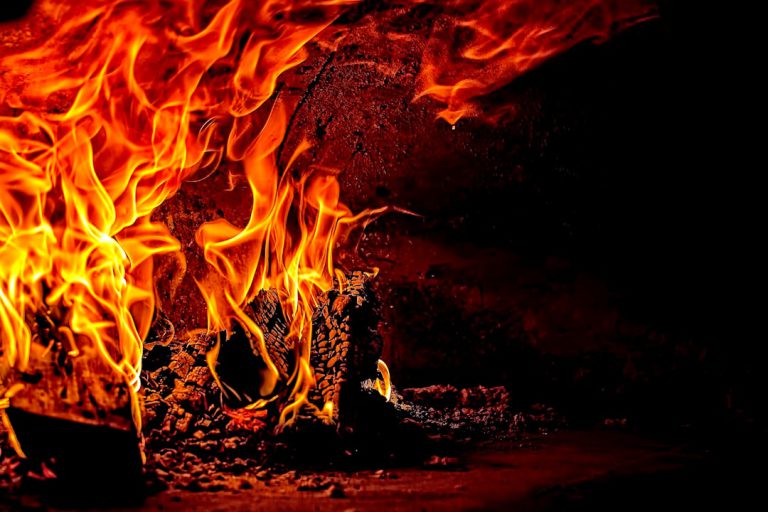The Sacred Significance of Symbols
Symbols are an integral part of human culture, serving as a means of communication and representation. They have the power to convey complex ideas and emotions, transcend language barriers, and connect people across different cultures and time periods. In this blog post, we will explore the role of symbols in human culture, their historical evolution, their spiritual significance in religious traditions, their psychological impact on the human mind, their use in art and literature, their importance in personal identity and self-expression, their role in dreams and rituals, and their contemporary relevance in modern society.
Key Takeaways
- Symbols play a crucial role in human culture, conveying complex ideas and emotions.
- Symbolism has evolved across different cultures throughout history, with spiritual significance in religious traditions.
- Symbols have a psychological impact on the human mind and are used in art, literature, and personal identity.
- The symbolic language of dreams can be interpreted to reveal deeper meanings.
- Symbols continue to be relevant in modern society, used in rituals and ceremonies.
Understanding the Role of Symbols in Human Culture
Symbols can be defined as objects, images, or gestures that represent something else. They are used to convey meaning and communicate ideas and emotions. Symbols play a crucial role in human culture because they allow us to express ourselves beyond the limitations of language. For example, a heart symbolizes love and affection, while a thumbs-up gesture signifies approval or agreement.
Symbols are present in our everyday lives, often without us even realizing it. Traffic signs, for instance, use symbols to communicate important messages to drivers. The red octagon symbolizes stop, while the green circle represents go. Similarly, logos of companies and brands are symbols that instantly convey information about the company’s identity and values.
The Power of Symbols to Convey Complex Ideas and Emotions
Symbols have the unique ability to convey abstract concepts and emotions that may be difficult to express through words alone. For example, a dove is often used as a symbol of peace and harmony. The image of a dove with an olive branch in its beak is instantly recognizable as a representation of peace.
Symbols are also used in different contexts to convey complex ideas and emotions. In literature, for instance, authors often use symbols to add depth and layers of meaning to their work. The green light in F. Scott Fitzgerald’s “The Great Gatsby” symbolizes the unattainable American Dream, while the white whale in Herman Melville’s “Moby-Dick” represents the destructive power of obsession.
The Historical Evolution of Symbolism Across Different Cultures
| Culture | Time Period | Symbolism |
|---|---|---|
| Egyptian | 3000 BC – 30 BC | Scarab beetle – rebirth and regeneration |
| Greek | 8th century BC – 4th century AD | Owl – wisdom and knowledge |
| Chinese | 1600 BC – present | Dragon – power and good luck |
| Native American | Pre-Columbian era – present | Bear – strength and courage |
| Christian | 1st century AD – present | Cross – sacrifice and redemption |
Symbols have played a significant role in human culture throughout history. Different cultures have developed their own unique symbols, many of which have evolved over time and acquired new meanings. For example, the swastika was originally a symbol of good luck and prosperity in Hinduism and Buddhism. However, its association with Nazi Germany during World War II has forever changed its meaning and made it a symbol of hate and genocide.
Symbols have also been used to represent cultural and national identities. The American flag, for instance, is a powerful symbol of patriotism and unity for many Americans. Similarly, the Chinese dragon is a symbol of power and good fortune in Chinese culture.
The Spiritual Significance of Symbols in Religious Traditions
Symbols play a crucial role in religious traditions around the world. They are used to represent spiritual concepts, beliefs, and practices. For example, the cross is a central symbol in Christianity, representing the crucifixion and resurrection of Jesus Christ. In Hinduism, the Om symbol represents the divine sound of creation.
Symbols are often used in religious rituals and ceremonies to create a sense of sacredness and connect individuals to the divine. For example, the menorah is lit during Hanukkah to commemorate the miracle of the oil in Jewish tradition. Similarly, the crescent moon and star are symbols associated with Islam.
The Psychological Impact of Symbols on the Human Mind

Symbols have a profound psychological impact on the human mind. They can evoke strong emotions, influence behavior, and shape our perceptions of the world around us. For example, the sight of a national flag can evoke feelings of pride and patriotism, while a skull and crossbones can elicit fear or danger.
Symbols also have the power to influence our behavior. For example, the golden arches of McDonald’s are a symbol that instantly triggers hunger and cravings for fast food. Similarly, the Nike swoosh symbolizes athleticism and inspires motivation and determination.
The Use of Symbols in Art and Literature to Convey Meaning
Symbols are widely used in art and literature to convey meaning and add depth to creative works. Artists and writers often use symbols to represent abstract concepts, emotions, or themes. For example, Vincent van Gogh’s painting “Starry Night” uses swirling brushstrokes and a crescent moon symbol to convey a sense of tranquility and wonder.
In literature, symbols are used to create layers of meaning and engage readers on a deeper level. For example, the mockingbird in Harper Lee’s “To Kill a Mockingbird” symbolizes innocence and the destruction of innocence. Similarly, the scarlet letter in Nathaniel Hawthorne’s novel of the same name represents sin and shame.
The Importance of Symbols in Personal Identity and Self-Expression
Symbols play a significant role in personal identity and self-expression. They can represent our beliefs, values, and individuality. For example, religious symbols such as the Star of David or the Christian cross can be worn as jewelry to express one’s faith.
Symbols can also be used to represent personal experiences or milestones. For example, a wedding ring is a symbol of commitment and love, while a graduation cap represents academic achievement.
The Symbolic Language of Dreams and Its Interpretation
Symbols are often used in dreams as a means of communication from the subconscious mind. Dream symbols can have personal meanings that vary from individual to individual, but there are also common symbols that have universal interpretations.
For example, dreaming of flying can symbolize freedom or a desire for escape, while dreaming of falling can represent insecurity or a loss of control. Dreaming of water often symbolizes emotions and the unconscious mind, while dreaming of a snake can represent transformation or hidden fears.
The Role of Symbols in Rituals and Ceremonies
Symbols are an integral part of rituals and ceremonies in different cultures and religions. They are used to create a sense of sacredness and connect individuals to the divine or to each other. For example, the lighting of candles during a religious ceremony can symbolize the presence of the divine or the offering of prayers.
Symbols are also used in cultural ceremonies to mark important milestones or events. For example, the blowing out of candles on a birthday cake symbolizes the passing of another year, while the breaking of a glass at a Jewish wedding symbolizes the destruction of the Temple in Jerusalem.
The Contemporary Relevance of Symbols in Modern Society
In modern society, symbols continue to play a significant role in communication and representation. They are used in various forms of media, such as advertising, branding, and social media. For example, emojis have become a popular way to convey emotions and reactions in digital communication.
Symbols are also used in activism and social movements to represent causes and ideals. The rainbow flag, for instance, is a symbol of LGBTQ+ pride and equality. Similarly, the raised fist symbolizes solidarity and resistance.
Symbols are an essential part of human culture, serving as a means of communication, representation, and self-expression. They have the power to convey complex ideas and emotions, transcend language barriers, and connect people across different cultures and time periods. Symbols have played a significant role throughout history, evolving and acquiring new meanings along the way. They continue to be relevant in contemporary society, shaping our perceptions, influencing our behavior, and adding depth to our creative works. Symbols are not just images or gestures; they are powerful tools that help us make sense of the world around us and express our deepest thoughts and emotions.
If you’re interested in exploring the sacred meaning behind different animals, you might find this article on Spiritual Graph quite intriguing. It delves into the spiritual significance of the Grey Dove, shedding light on its symbolism and the messages it may carry. Discover how this gentle creature can serve as a powerful messenger from the divine realm. To learn more about the Grey Dove’s spiritual meaning, check out the article here: Grey Dove Spiritual Meaning.
FAQs
What is the meaning of sacred?
Sacred refers to something that is considered holy, divine, or worthy of respect and reverence. It is often associated with religious or spiritual beliefs and practices.
What are some examples of sacred objects?
Examples of sacred objects include religious texts, statues, icons, relics, and ceremonial items such as chalices, candles, and incense.
What is the significance of sacred places?
Sacred places are locations that are considered to be imbued with spiritual or religious significance. They may be associated with important events or figures in religious history, or they may be natural sites that are believed to have special powers or energies.
What is the role of sacred rituals?
Sacred rituals are practices that are performed for religious or spiritual purposes. They may involve prayer, meditation, chanting, or other forms of worship, and are often used to connect with the divine or to seek guidance and blessings.
How do different cultures view sacredness?
Different cultures have their own unique beliefs and practices surrounding sacredness. Some cultures may view certain objects or places as sacred, while others may place more emphasis on sacred rituals or spiritual practices. Ultimately, the concept of sacredness is shaped by cultural and religious traditions, as well as individual beliefs and experiences.






